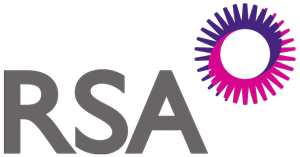
Best Insurance for Professional Construction Service Firms
5-Star Awards 2021: Construction Insurance
Insurance for professional construction services firms protects these firms from being sued for services rendered.
5-Star Excellence Awards
- Agile Underwriting
- Burns & Wilcox
- Intact Insurance
- Premier Group
- Totten Insurance Group
- Victor Canada
What kind of insurance do construction companies need?
There is no one universal insurance policy that will cover every type of construction company’s needs, and most of the time, a general business owners policy won’t be enough. There are, however, eight different policies every construction company should have.
General liability insurance. Most businesses, including those in construction, should invest in this type of insurance. It will protect your company from liabilities such as injury claims and medical expenses, as well as damage to a customer’s property or from a product you installed, i.e., improperly sealed windows or faulty plumbing.
Professional liability insurance. Unlike general liability coverage, professional liability insurance covers errors that could have a financial impact on a project, such as design flaws or value engineering on the job, or modifications that can cause major issues.
Pollution liability insurance. This policy will cover you if you are liable for pollution on a job site. General liability policies usually do not include pollution liability, although some limited coverage can be provided through an endorsement. A stand-alone pollution liability policy, however, will generally provide significantly more coverage. In certain cases, you can combine a professional and pollution liability policy into one.
Business vehicle and commercial auto insurance. Using a personal vehicle for business reasons can create potential coverage gaps, which is why it is a good idea to title the vehicle under the business’s name and purchase a commercial auto policy. You can insure cars, trucks, and much larger vehicles like tractor trailers, dump trucks, or cement trucks, with this type of policy.
Inland marine insurance. Construction companies routinely transport tools, equipment, and supplies between work sites. Typically, business insurance will cover for property while on a site rather than during transport, which is where inland marine insurance comes in handy.
Contractor license bonds or surety bonds. To ensure customers get the completed work and services that have been promised, some jurisdictions require contractors to obtain permit and license bonds. It helps ensure customers will net be left holding the bill and that the contractor instead pay for any labour and materials needed to finish the job.
Workers’ compensation insurance. This is a very common form of insurance required in most places to protect employees from medical expenses and lost wages resulting from job-related injuries and illnesses.
Cyber insurance. This will protect your company’s data and the data of third-party vendors and your customers. As construction companies, like most businesses, are relying more heavily on technology, the need to protect data is increasing.
How much does insurance cost for a construction company?
There are many different factors to take into account when calculating the costs of construction business and contractor insurance, including where you operate and your type of work. For Insureon customers in the U.S., for instance, construction businesses and contractors pay, on average, less than $70/month, or $825/year, for general liability insurance, which covers third-party property damage and injuries, and advertising injuries.
What does a construction insurance policy cover?
Builders risk insurance (or inland marine coverage or course of construction) protects a person’s or organization’s materials, fixtures, and equipment during the renovation or construction of a structure or building, in the even that those items sustain damage or physical loss. Builders risk policies are usually available for remodelling, ground-up new construction, and installation.
What type of insurance coverage is traditionally used by contractors?
Because the number of risks associated with construction are so varied, some coverage options for contractors are more common than others. Here is a list of the five most commonly used for contractors.
Commercial general liability insurance. Commonly called commercial general liability insurance, general liability insurance is generally the top choice and most used type of insurance contractors seek out. It does not, however, offer total liability protection. Standard CGL policies protect against claims related to property damage and bodily injury – and can leave major gaps in coverage.
Builder’s risk insurance. This type of insurance protects contractors and named insured parties while a building is under construction. The buyer of the policy can name the general contractor, the building’s owner, and any subcontractors as insured parties, depending on the project’s contract. Many builder’s risk policies cover the building’s structure, as well as construction materials and on-site equipment. Typically, builder’s risk insurance expires once construction is finished.
Professional liability insurance. If a contractor takes on consulting and design work, they’re open to errors and omissions liabilities. Professional liability insurance can mitigate those risks.
Contractor pollution liability insurance. This is a contractor-based policy offering on an occurrence or claims-made basis, providing third-party coverage for property damage, bodily injury, and clean-up of accidental, sudden, or gradual pollution from construction.
Umbrella liability coverage. This is useful for contractors operating bigger or multiple construction sites, allowing for extended limits to existing coverage, in case damages exceed basic policy limits.
What insurance do Owner Builders need?
Owner-builder work is any type of work, including coordination of the alterations, repairs, construction, or additions to a property, and supervision, where the market costs, including materials and labour, are more than $10K. It also relates to a secondary dwelling, dual occupancy, or single-dwelling house that is a complying development within the meaning of the Environmental Planning and Assessment Act 1979, or requires development consent under that Act.
Keep up with the latest news and events
Join our mailing list, it’s free!



